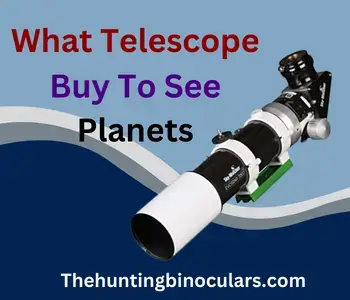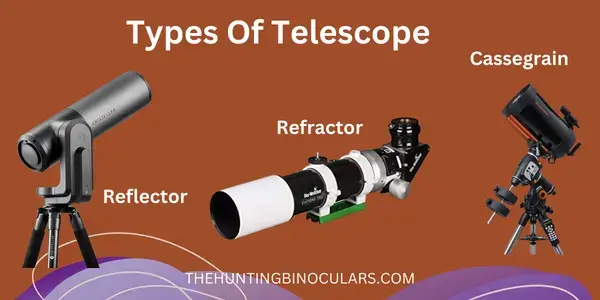
Are you an astronaut or do just want to see mysterious things that are present in the sky such as galaxies, planets, stars, and the milky Way? Then you must require a telescope of good quality. But as you are going to do this the first time, you might be unaware of it.
What telescope should I buy to see planets? So, when it comes to buying the telescope for the first time, you will have to consider the significant amount of aperture, magnification, and focal ratio of the telescope. It is because you will require more accuracy and precision to see these distant objects.
Well, you can get more information about the best telescopes for planets in the below-given article! You also can read the history of telescopes by clicking the given link.
Table of Contents
What telescope should I buy to see Planets Beginner Guide
Planets are among the most fascinating things for astronomers to analyze. They always shine out on their own and are mysterious to offer you various points of view.
For instance, some of the most frequently seen views are the hazy exterior texture of Mars, Saturn’s bands, and Jupiter’s Cloud Belts. You can always see a new sight and perspective every night because the planets frequently move.
Thus, the most important factors to think about when purchasing a telescope to see the stars are magnification, size, and field of view. The optimum precision of your telescope is extended by a wider aperture and magnification. Thus, this cumulative impact has a restriction. Every inch of aperture offers 50 times the magnification.
So, a 10-inch aperture telescope will allow you to enlarge objects by about 500 times before the visual acuity begins to decrease. This is the possibility of its “vision.”
Thus, below are some factors that are essential to consider for telescopes to see planets:
Magnification
Many planets are located close to the Earth’s stratosphere and are generally seen through a basic telescope with a shorter focal length. So, objects like Pluto and Uranus are too far away to be seen through such a telescope.
A telescope needs a longer viewing angle to see clear pictures of distant and more airy planets. Any visual object’s magnifying power is dependent on its viewfinder. You can easily view faraway celestial objects with a longer focal length, and you can adjust the focal distance to see the Earth’s nearest objects.
The maximum aperture of a telescope is the range between the center of the optical viewfinder in refractor telescopes and the focal point. There the picture of the target object is formed in reflective telescopes.
Aperture
The size of the light-gathering optic is what refers to as the aperture. The telescope’s aperture is where light enters the instrument. The hole is similar to the human eye’s pupils as both have similar features. Your pupils dilate in a dim environment to let in more illumination for clearer vision.
So, if the room is illuminated, you will strain and constrict your pupils to control the amount of light coming in. A narrow opening will result in a larger and crisper picture while a wide aperture lets a significant amount of light into the lens. The apertures of telescopes are typically 2.8 inches or larger.
Where you plan to utilize the telescope will also affect the aperture size. Large aperture telescopes are ideal for urban regions as they can have dirty air, which makes it more difficult to see the sky.
Image quality
Multicolor and visual distortions intrude to warp a completely good image of the universe beyond the heavens. They are one of the major blights of telescopes. The scattering of various light beams away from the central focus or the picture plane causes image distortion.
The vision being formed at the objective lens is usually distorted because the lens is reluctant to concentrate all of the light waves reflecting from one object to a single spot.
Any flaw in the design of the lens or mirror might result in visual defects. The light will be scattered and the picture will become deformed if there is even a small difference in the angle.
Focal Ratio
The focal length of a telescope or the area of space you can view at once is determined by its focal ratio. More of the sky will be seen if the focal length will be wider. So, the focal length or ratio is among the most important factors to take into account. It is the range of the telescope’s aperture to the focal distance.
You will get a figure by dividing the focal length by the aperture. The fraction will be categorized using this figure. A greater value indicates that the telescope will provide you with a reduced view field when magnified more. As a result, it is recommended to use a wide focal ratio while viewing smaller objects, like some planets.
You must notice that it will also make it more challenging to separate and recognize sky items. When it is below 5, it is regarded as having a poor focal ratio.
Mount
You must be aware that the mount is the telescope’s foundation. Besides being the telescope’s core, it is still an essential component of the apparatus.
Now you can consider what would you do with a telescope that will be equipped with cutting-edge optical elements but unable to simply remain straight or still. You will not be able to see anything.
Your telescope will stay flat and require fewer adjustments with a suitable mount. Don’t cut corners when it comes to the mount’s reliability.
Any telescope will have one of 3 kinds of amounts: Alt-Azimuth, Motorized, and German Equatorial. Mounts with motors are preferable to those with manual adjustments. Thus, there are still some excellent physical mounts available.
Storage
Although they can be made to last, telescopes also are very delicate technological gadgets. Before you go out and buy your telescope, you must remember that you will also require a storage container or bag to store it in when it’s not in use. Its essential components could be damaged if it is not stored properly.
You might think about purchasing a smaller telescope if you have a small house and don’t have proper space for it. The finest option for you can be a telescope with larger proportions if you have a large amount of personal area.
Everything relies on where you can store the telescope. Larger telescopes can come with extra amenities that make them a better option. Thus, they are frequently costly.
Types of Telescopes
There are several types of telescopes, some of which you might have already experienced. Below are some common types of telescopes and they all have different features and attributes:
- Cassegrain
- Reflector
- Refractor
- Finder-scopes
Finder-scopes are among the most useful tools for locating objects, especially planets. If you’re not familiar with them, finder-scopes are small pointing tools that attach to the front of telescopes and are provided with higher-quality scopes.
You have a wider field of view because they are less magnified than your scope’s primary sight. This will let you precisely aim at particular celestial bodies, such as planets. This enables you to align up perfectly and correctly direct your telescope.

Connectivity with Smart Devices
While buying a telescope, you will also have to consider the connectivity option with smart devices as it is very essential for your ease. Thus, modern telescopes have connectivity options that can link to your smartphone or other gadgets.
This function improves quality performance and makes it simple to record any unexpected behavior or invisible item in the limitless space.
Settings
You should be aware that there are numerous kinds of telescopes, including types for home usage and more sophisticated models. A more portable patio telescope can be a better alternative for you if you want to use the gadget close to your house.
You might need to change your devices in this circumstance from one area of the house to another. You can travel with ease if you have a Get and-Go telescope. You can choose a room to keep the telescope there constantly.
Thus, investing in a large telescope is not a terrible idea. There won’t be much mobility required for it.
How much is the Telescope?
Well, purchasing a telescope will cost you a significant sum of money. Making the wrong decision could be quite expensive, and you might not be able to get your money refunded. Also, it is essential to check for the features as different telescopes have different features.
You must keep in mind that it is an expense and you can only spend what you can afford. Normally, based on what you need, telescopes cost anywhere from $99 to over $20,000.
What telescope should I buy for a beginner?
Any trustworthy list of the best telescopes for novices would balance several variables, such as quality images, budget range, simplicity of use, and more. There are several beginning telescopes to select from.
The greatest telescope for novices has been found in multiple various customer characteristics. Below are some best telescopes to buy for a beginner:
- Zhumell Z130 Portable Altazimuth Reflector
- Orion Sky-Quest XT6 Telescope for Beginner
- Celestron NexStar 130SLT Computerized Telescope
- Orion Starblast Astro Reflector
- Celestron 70mm Portable Refractor Telescope
FAQ’s
Conclusion
I have briefly explained what telescopes should i buy to see planets in this article. You will have to consider all the above-given factors to make a wise decision while buying a telescope. As telescopes are a bit costly, you cannot waste your money on the wrong device. Also, if you are a newbie, you will have to consider a telescope with a higher aperture.
Can you see planets on binoculars, for the answer you can click on the link.
Don’t go without sharing your feedback!
